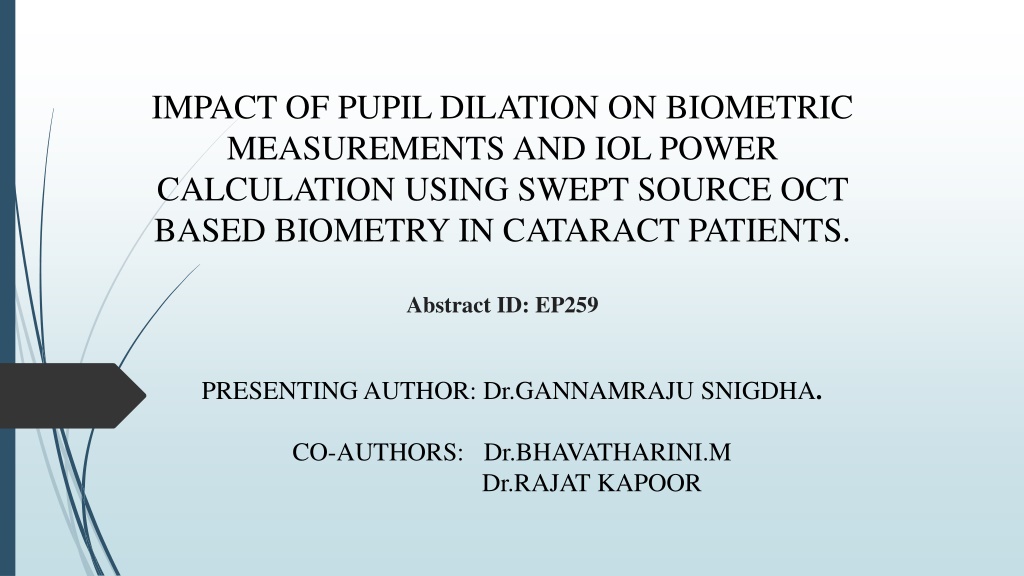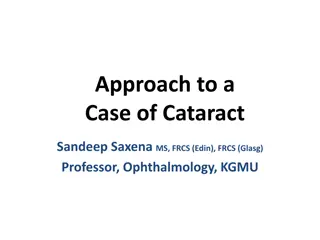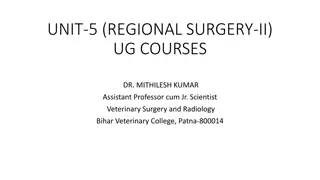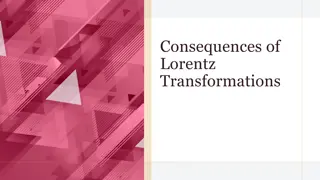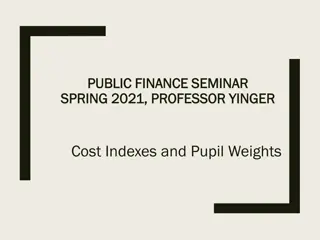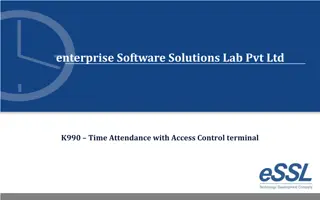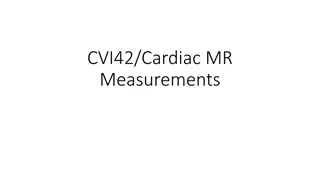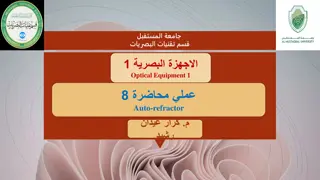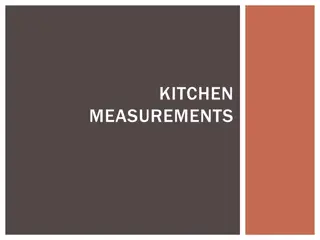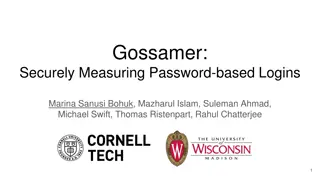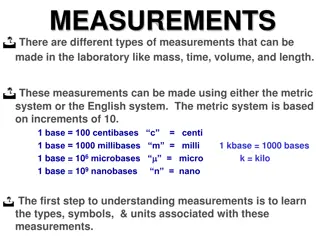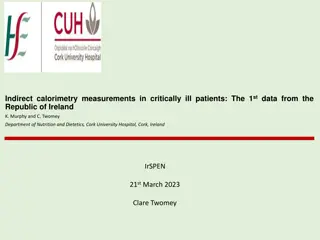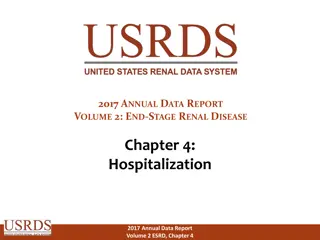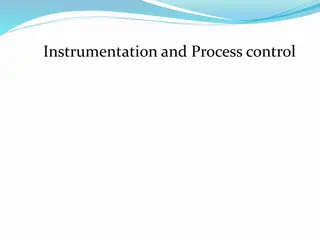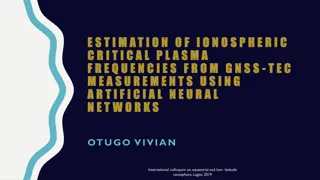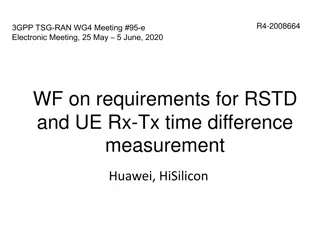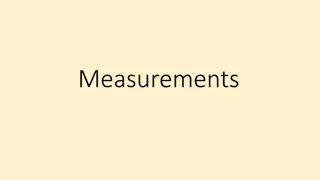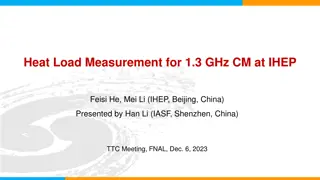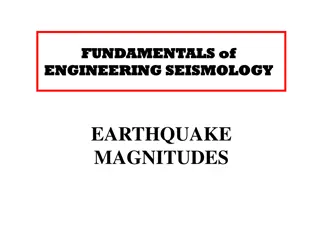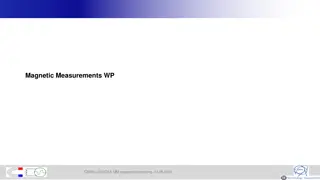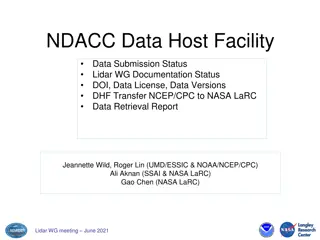Impact of Pupil Dilation on Biometric Measurements in Cataract Patients
Cataract surgery requires precise intraocular lens power calculation for optimal refractive outcomes. This study explored the effects of pupil dilation on biometric measurements (such as axial length, corneal power, anterior chamber depth, lens thickness) and IOL power calculation using SS-OCT based biometry. While corneal power and certain parameters showed significant changes post-dilation, IOL power calculations using SRK/T and Barrette formulas remained unaffected. Understanding these impacts can enhance the accuracy of IOL power calculations in cataract surgery.
Download Presentation

Please find below an Image/Link to download the presentation.
The content on the website is provided AS IS for your information and personal use only. It may not be sold, licensed, or shared on other websites without obtaining consent from the author. Download presentation by click this link. If you encounter any issues during the download, it is possible that the publisher has removed the file from their server.
E N D
Presentation Transcript
IMPACT OF PUPIL DILATION ON BIOMETRIC MEASUREMENTS AND IOL POWER CALCULATION USING SWEPT SOURCE OCT BASED BIOMETRY IN CATARACT PATIENTS. Abstract ID: EP259 PRESENTING AUTHOR: Dr.GANNAMRAJU SNIGDHA. CO-AUTHORS: Dr.BHAVATHARINI.M Dr.RAJAT KAPOOR
INTRODUCTION: Cataract surgery involves the precise calculation of intraocular lens (IOL) power to achieve the desired postoperative refractive outcomes. Advanced biometers, such as the IOL Master 700, utilize swept-source optical coherence tomography (SS-OCT) for precise measurements. However, variations in pupil size due to dilation might affect biometric measurements and subsequent IOL power calculations. This study aims to evaluate the impact of pupil dilation on various biometric parameters, including axial length (AL), corneal power, anterior chamber depth (ACD), lens thickness (LT), and IOL power calculation using SRK/T and Barrette formulas. By understanding the impact of pupil dilation, this study seeks to enhance the accuracy and consistency of IOL power calculations in cataract surgery.
MATERIALS AND METHODS: Prospective observational study conducted between July 2023 and Dec 2023. A total of 300 right eyes of 180 men and 120 women with cataract were included in the study. Study was approved by IRB and written informed consent was obtained from patients. Patients with ocular co-morbidities or prior ocular surgery were excluded. Axial length (AL), corneal power(K1 and K2), Anterior chamber depth (ACD),Lens thickness(LT),IOL power for mono and trifocal IOL with SRK/T and Barrette formula were measured pre- and post dilatation and analysed. Statistical analysis was performed using paired t-test and P 0.05 was considered significant.
Mean Post- dilation (mm or D) 23.25 S.No Biometric Parameter Mean Pre- dilation (mm or D) Mean difference (mm or D) P- value RESULTS: Mean age of patients was 60.07 + 9.03 years. 1 Axial Length (AL) 23.24 -0.002 0.83 2 Corneal Power (K1) Corneal Power (K2) Anterior Chamber Depth (ACD) Lens Thickness (LT) IOL Power - Monofocal(SRK/ T) IOL Power - Trifocal(SRK/T) IOL Power - Monofocal (Barrette) IOL Power - Trifocal (Barrette) 43.84 43.90 -0.02 0.005 Axial length did not differ significantly after dilation. 3 44.65 44.70 -0.04 0.004 4 3.14 3.21 0.063 <0.01 Corneal power differed significantly. 5 4.30 4.36 0.026 <0.01 6 21.36 21.34 -0.02 0.24 ACD and lens thickness significantly increased post dilation. 7 21.21 21.24 -0.04 0.28 8 21.24 21.27 -0.03 0.10 IOL power using SRK T and Barrette formula was not significantly affected. 9 21.36 21.38 -0.02 0.24
DISCUSSION Similar to our study, Xi et al., found no significant change in axial length after pupil dilation. Our study, along with Alvaro et al., and Simon et al., reported a significant increase in ACD post-dilation across various patient groups. We observed significant changes in corneal power, while Xi et al., found no significant changes, potentially due to differences in patient demographics. Our study found a significant increase in lens thickness, whereas Xi et al. reported a significant decrease, warranting the need for further research. Our study found no significant impact on IOL power calculations using SRK/T and Barrette formulas, while Xi et al. observed significant differences pre- and post- dilation, especially with the Barrett Universal II formula in long eyes.
CONCLUSION Pupil dilation does not impact axial length in cataractous eyes but alters ACD, Lens thickness and corneal power. However IOL power using SRK/T and Barrette s formula remain unaffected. Therefore it is important to document the pupil status during IOL master acquisition for consistent and accurate optimization. By accounting for biometric variations induced by pupil dilation, clinicians can improve the precision of preoperative assessments and refractive outcomes for cataract surgery patients.
REFERENCES Xi W, Yang M, Wan J, Wang Y, Qiao Y, Huang X, Liu X, Fan N, Liu S, Zeng K and Chen S (2022) Effect of pupil dilation on biometry measurements and intraocular lens power in eyes with high myopia. Front. Med. 9:963599. Rodriguez-Raton A, Jimenez-Alvarez M, Arteche-Limousin L, Mediavilla-Pe a E, Larrucea-Martinez I. Effect of Pupil Dilation on Biometry Measurements with Partial Coherence Interferometry and Its Effect on IOL Power Formula Calculation. European Journal of Ophthalmology. 2015;25(4):309-314. Simon, N.C., Farooq, A.V., Zhang, M.H. et al. The Effect of Pharmacological Dilation on Calculation of Targeted and Ideal IOL Power Using Multivariable Formulas. Ophthalmol Ther 9, 1 11 (2020).
